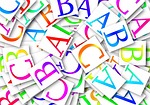Christie is also a presenter, writer and the editor of Childhood 101, where these ideas have been put together. She is also a mum herself who believes wholeheartedly in the value of children learning through play, the importance of quality early education, and the togetherness of family.
She says: “As I have shared previously, learning to automatically recognise high frequency sight words is an important part of this process as automatic recall positively influences reading fluency, which in turn aids clearer comprehension. Providing lots of opportunity for children to revisit sight words is important to the development of automatic recall but this repetition doesn’t have to be boring, in fact the 50 sight word activity ideas included in this list are most definitely not boring! These fun and playful ideas include something for everyone – for those who like to be physically active to those who like a side of creativity with their learning, there’s something for the child who loves a cognitive challenge and for the one who learns best through co-operative games – the list includes suggestions suitable for all types of learners.”
K12 Reader Reading Instruction Resources for Teachers and Parents says: “Successful readers use a number of tools to help them understand texts. One of the most effective and powerful reading tools that parents and teachers can help children develop is sight word recognition. When a child is able to grasp and identify sight words he is well on his way to becoming a thriving reader.
What are Sight Words?
According to K12 Reader:
-
50% of all reading texts are made up of the same 100 words.
-
The most frequently used and repeated words in the English language are known as sight words.
-
This list of words includes the, a, is, of, to, in, and, I, you, and that.
Sight words are critical to reading not only because they are used so frequently, but also because many of them cannot easily be sounded out or illustrated. Using phonics or picture reading skills for words like these is useless and fruitless for readers, especially those who are in the early stages of developing their decoding skills.
Because they are used so often it is important that readers be able to recognize these words on sight (hence the term “sight words”). When a reader masters sight words she is able to understand at least half of the words in a particular text. By eliminating the need to decode these words, the reader is able to focus on those that are more difficult and less familiar. Beyond this, sight words offer important clues about the meaning of a sentence. For example, when a reader is able to identify and understand the word and in a sentence, he knows that there will be multiple figures, actions or descriptors in the sentence. Similarly, if the reader sees the word into in the sentence, she knows there is movement from one location or idea to another.
See more at: http://childhood101.com/2013/09/sight-words-activity-ideas/#sthash.54DROD5U.dpuf
http://www.k12reader.com/what-are-sight-words/
Written by Rachel Harrison, speech and language therapist, on behalf of Integrated Treatment Services. www.integratedtreatmentservices.co.uk
Image rights – www.pixabay.com










